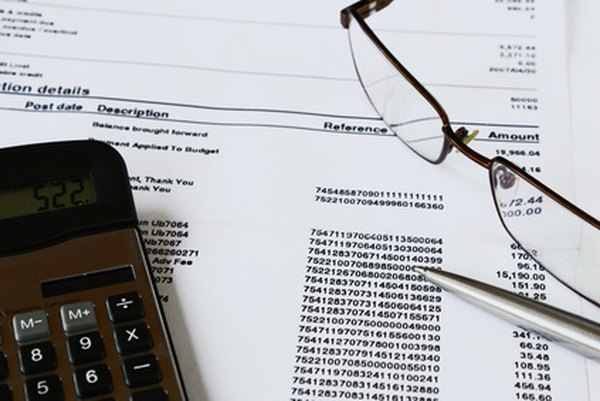How to Prepare Deductions for My Accountant
Credit card tabulations help your accountant quickly evaluate all possible tax deductions.
Checking credit card statment image by Elzbieta Sekowska from Fotolia.com
Dropping off a shoe box full of tax receipts at your accountant's office may save you time, but the disorganization can cost you in the form of missed tax write-offs. Preparing your deductions using a filing and notation system takes little time when done consistently throughout the year. About 80 percent of Americans ask accountants to help in tax preparation, according to the Better Business Bureau, and organized tax records help your accountant identify personal and work-related write-offs.
Collect your financial paperwork in one large box. Print copies of online bank and credit card statements, if you have your records saved in digital formats. Scan copies of the paper receipts and statements into the computer tax program, if you and your accountant use digital record keeping.
Step 2Sort your financial paperwork into general topics using the deductions taken on your tax forms for earlier years. Possible sorting categories include business expenses, home-related taxes, rental property expenses, federal and state government tax payments and health care expenses. If your job or health care appointments required travel, also sort financial paperwork for transportation costs. Group receipts for education expenses into a separate category.
Step 3Use the highlighters to underline potential deductions listed on your credit card bills. Color code the highlighters for different deductions. Use one color for all spending related to education expenses. Select another color highlighter to underline costs for health care listed on the credit card bills.
Step 4Transfer the color-coded highlighted information from your credit card billing to individual pieces of paper. Label the top of the paper with the type of deductions listed on the page.
Step 5Label the large envelopes with the topics for potential tax deductions. This labeled filing system keeps all receipts, statements and paper lists together in one category for tax reporting.
Step 6Calculate the subtotals for the different envelopes and attach a paper tape or save the digital calculations in the program file. This gives your accountant the ability to review your lists and recheck your math before using the figures on the appropriate tax form.
Step 7Keep a separate list of large purchases, including real estate, and any life changes during the year, such as a marriage, birth or a divorce. These changes affect your tax claims, and your accountant needs to review the information at the beginning of the tax-preparation session.
References
Resources
Tips
- No need to buy new envelopes for your filing system. Recycled or discarded envelopes work perfectly well.
- While it's possible to sit down in one or two marathon sessions to prepare the deductions for your accountant, it's easier to collect the information as you receive it throughout the year. At the end of each month, sit down with your credit card statements and bills to do the highlighting and filing. At the end of the year, collect your files in one box and take the organized envelopes to your accountant for incorporation into your tax statement.
- When you have new deductions for a year, such as education courses or a new business, discuss new deduction categories with your accountant at the beginning of the new tax year.
Warnings
- Don't toss your tax records after filing your income tax statement. The Internal Revenue Service requires you to store the information for a minimum of three years from the tax payment date for use in case of a challenge. Business owners must hold records for four years.
Writer Bio
Lee Grayson has worked as a freelance writer since 2000. Her articles have appeared in publications for Oxford and Harvard University presses and research publishers, including Facts On File and ABC-CLIO. Grayson holds certificates from the University of California campuses at Irvine and San Diego.

